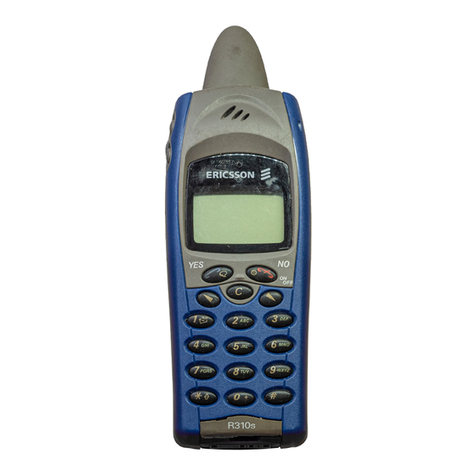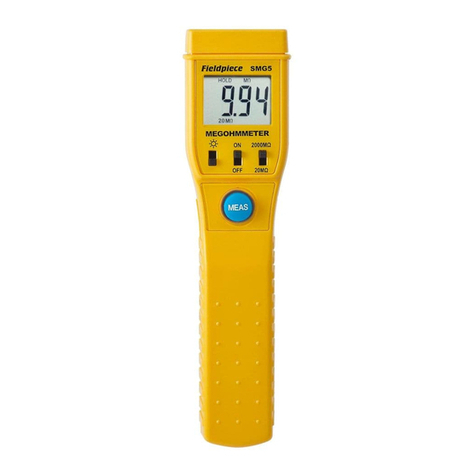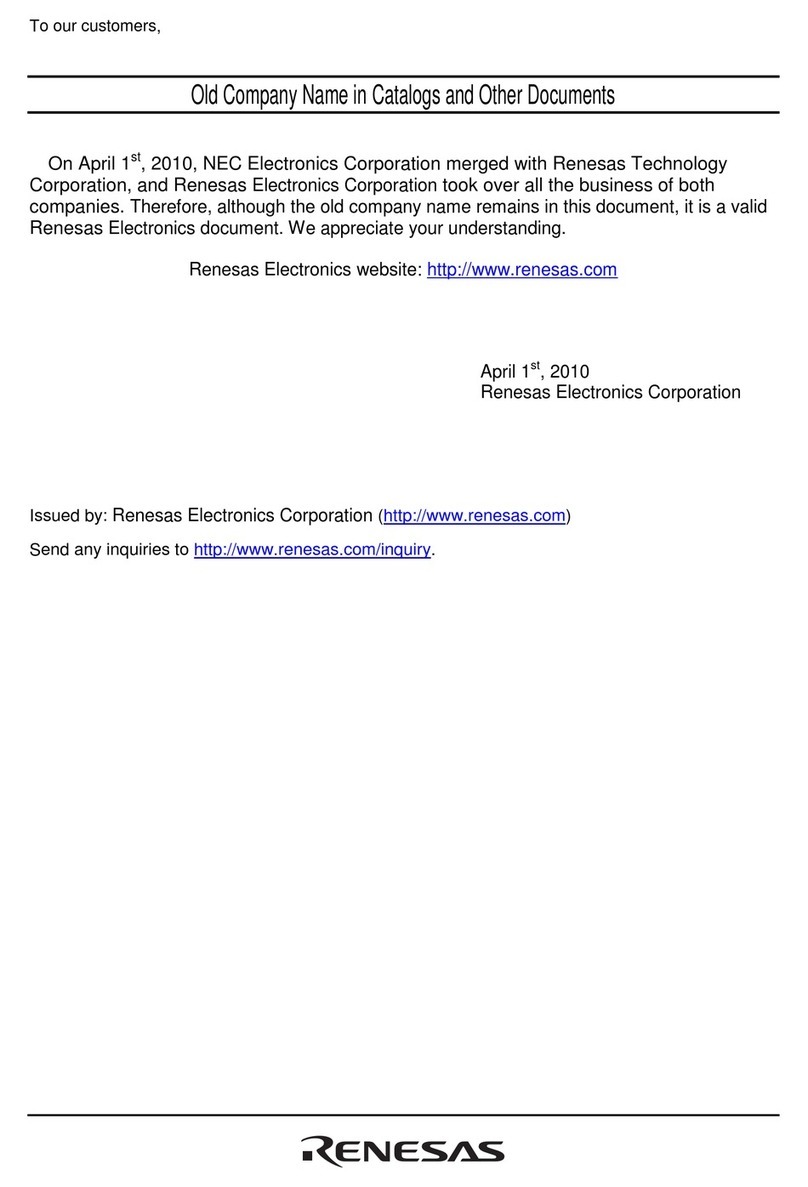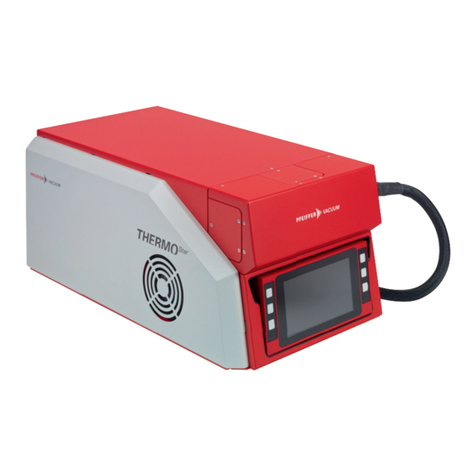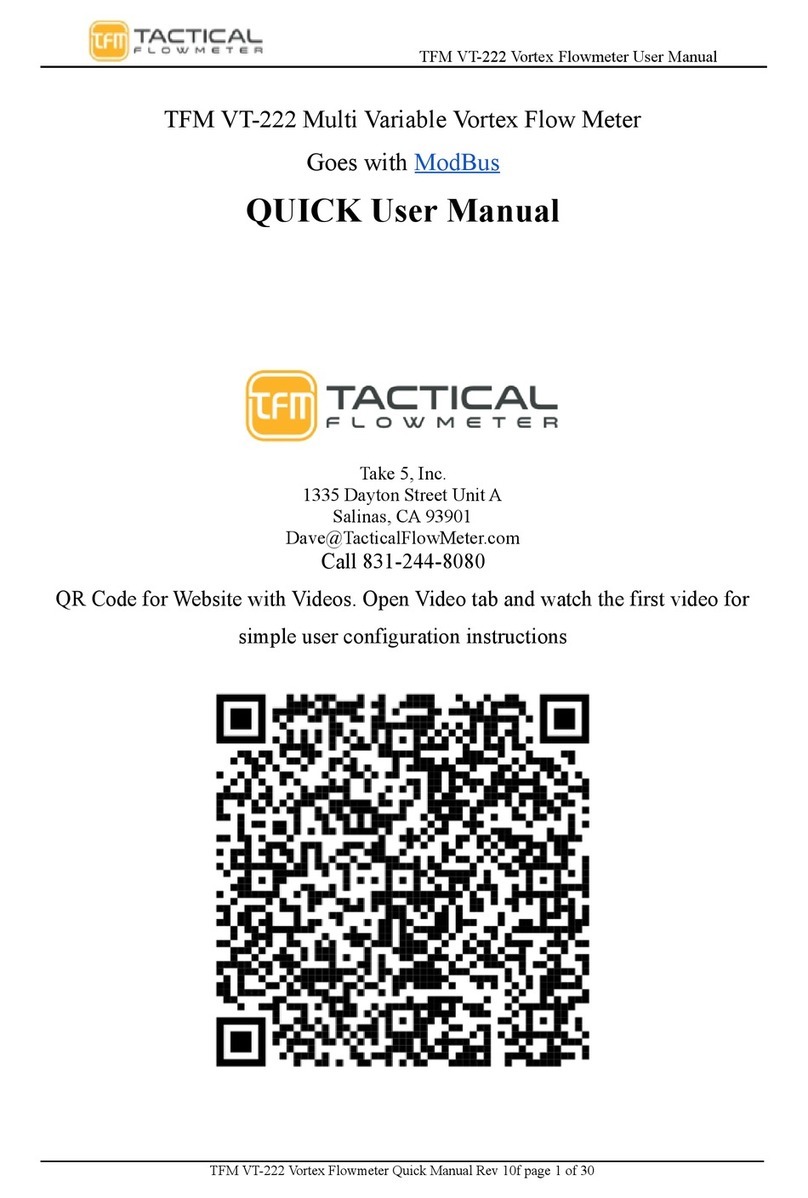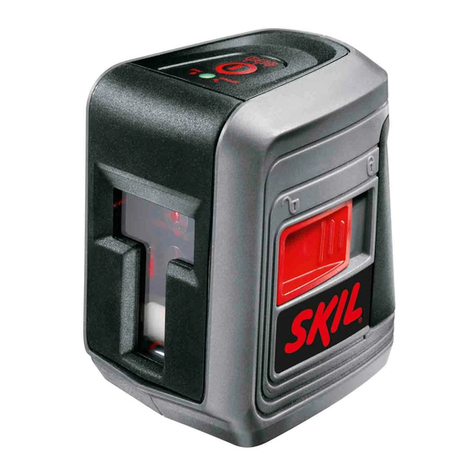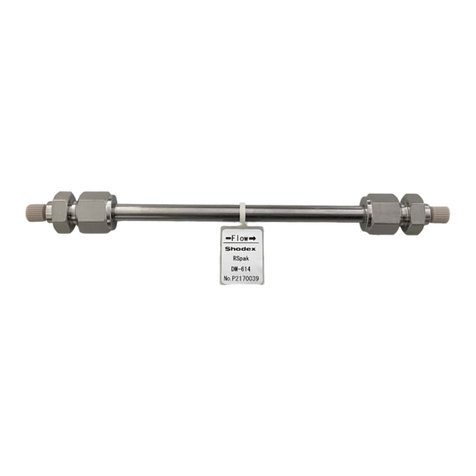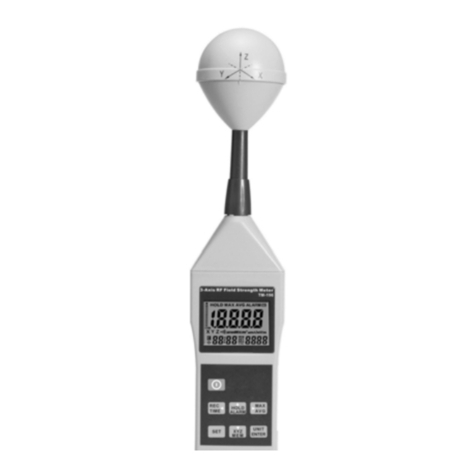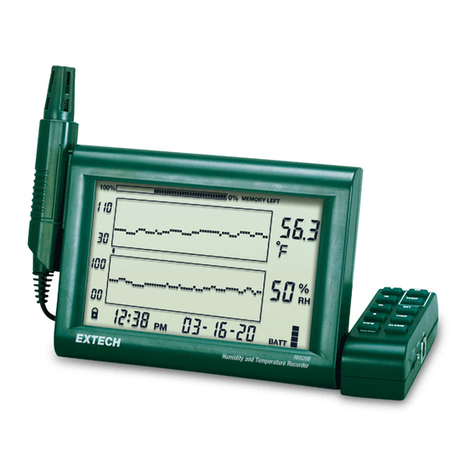Ericsson DT-620 User manual

Intertek Testing Services Ericsson Inc.
Model: DT-620
FCCID: AXAROA1173201
Report Name: ERI2433.DOC 1of 28
Ericsson Inc.
FCC Part 15 Subpart D Application
For
Certification
(Unlicensed Personal Communications Service Devices)
DCT1900 Portable Handset
Model: DT-620
FCC ID: AXAROA1173201
October 05, 1998
Intertek Testing Services
4317-A Park Drive, NW
Norcross, GA 30093
Phone: 770-925-2444
FAX: 770-925-7294
Prepared by: Reviewed by:
Mark A. Severson David J. Schramm
WO# 6059
RPT# eri24833.doc

Intertek Testing Services Ericsson Inc.
Model: DT-620
FCCID: AXAROA1173201
Report Name: ERI2433.DOC 2of 28
Table of Contents
1.0 General Description....................................................................................................................3
1.1 Product Description ............................................................................................................3
1.2 Related Submittals / Grants.................................................................................................3
1.3 Test Methodology...............................................................................................................3
1.4 Test Facility........................................................................................................................3
1.5 Test Equipment List............................................................................................................4
2.0 System Test Configuration..........................................................................................................5
2.1 Justification........................................................................................................................5
2.2 EUT Exercising Software....................................................................................................5
2.3 Special Accessories.............................................................................................................5
2.4 Equipment Modification .....................................................................................................5
2.5 Support Equipment List and Description .............................................................................5
2.6 Test Configuration Block Diagram......................................................................................6
3.0 Technical Requirements..............................................................................................................7
3.1 General Comments .............................................................................................................7
3.2 Requirements and Test Results, Part 15, Subpart D..............................................................8
4.0 Equipment Photographs .............................................................................................................15
5.0 Product Labeling.........................................................................................................................24
5.1 Label Artwork ....................................................................................................................24
6.0 Technical Specifications..............................................................................................................25
7.0 Instruction Manual .....................................................................................................................26
8.0 Test Procedures...........................................................................................................................27
8.1 Cross Reference to Subpart B..............................................................................................27
8.2 Peak Transmit Power, §15.319(c), and Power Spectral Density, §15.319(d).........................28
8.3 Emission Bandwidth...........................................................................................................28
8.4 Spurious Emissions, §15.323 (d).........................................................................................28
8.5 Carrier Frequency Stability, §15.323 (f) ..............................................................................28

Intertek Testing Services Ericsson Inc.
Model: DT-620
FCCID: AXAROA1173201
Report Name: ERI2433.DOC 3of 28
1.0 General Description
1.1 Product Description
The DT620 is a portable telephone which operates in the unlicensed isochronous PCS band from 1920Mhz
to 1930Mhz. The frequency spacing of 8 separate channels is 1.25Mhz with the lowest channel centered at
1920.625Mhz. The DT620 operates on two power levels, 2mW and 90mW. The maximum peak transmit
power level is 19.5dBm or 90mW. The Frequency reference for the handset is a 15Mhz Temperature
compensated crystal oscillator (TCXO), D200.
The portable transceiver is made up of two major circuit elements. A combination of digital and analog
circuits provides a telephony user interface, with associated keypad, display, microprocessor and battery
functions. The other part of the transceiver is the radio circuit. Radio circuits consist of synthesizers,
mixer, amplifiers and filters. Also included is the QPSK modem(D20) function and related radio control
functions for transmitting and receiving digital radio signals. Since the system is Time Division Duplexed
the same frequency is used for both transmit and receive.
After converting the TX signal to the frequency between 1920Mhz and 1930Mhz the signal is routed
through a 3 pole bandpass filter, k L235, which removes the 1075.625Mhz to 1085.625Mhz image signals
as well as the second LO at 1498.125 to 1506.875Mhz. A discrete filter follows the PA to reject harmonics
of the output signal.
1.2 Related Submittals / Grants
There is a related submittal for this application. A related filing has been made for the DT-600, a previous
version of the EUT. The FCC ID for the previous filing is AXAROA1173197. The base station for the DT
620 was filed under FCC ID: AXAKRC1011371.
1.3 Test Methodology
Both AC mains line-conducted and radiated emission measurements were performed according to the
procedures in ANSI C63.4 (1992). All measurements were performed in Open Area Test Sites. For each
scan, the procedures for maximizing emissions described in Section 8.1 of this report were followed. All
radiated tests were performed at an antenna to EUT distance of 3 meters, unless stated otherwise in the
appropriate section of this Application. The DT-620 was tested in accordance with ANSI C63.17:1998.
1.4 Test Facility
The North site is located at 4317-A Park Drive in Norcross, Georgia. The site consists of a wooden
enclosed structure with a steel ground plane. The site meets the characteristics of ANSI C63.4:1992 and is
on file with the FCC. Please reference the site filing number: 3140/SIT 1300F2, dated April 26, 1996. For
measurements a remotely controlled flush mount metal top turntable is used to rotate the EUT a full 360
degrees. A remote controlled non-conductive antenna mast is used to scan from one to four meter heights.
The site enclosure is constructed of non conductive materials.

Intertek Testing Services Ericsson Inc.
Model: DT-620
FCCID: AXAROA1173201
Report Name: ERI2433.DOC 4of 28
1.5 Test Equipment List
The following test equipment was used during testing:
Type Manufacturer Model Number Serial Number
Spectrum Analyzer Hewlett Packard 8566B 2134A01032
Preamplifier Compliance Design P950 EMC-0002
Preamplifier Hewlett Packard 8447D 2237109
Preamplifier Hewlett Packard 8449B 3008A00989
Preselector Hewlett Packard 85460A 3348A00203
Power Meter Hewlett Packard 436A 1803A04471
Power Sensor Hewlett Packard 8481A 2702A65715
Horn Antenna EMCO 3115 9208-3919
Horn Antenna EMCO 3116 9310-2222
BiLog Chase CBL6112B 2245
Tuned Dipole Ant. Compliance Design Roberts A100 423
Antenna Mast EMCO 2070 9704-2405
LISN Solar 8012-50-R-24-BNC 924866
Transient Limiter Hewlett Packard 11947A 3107A01807

Intertek Testing Services Ericsson Inc.
Model: DT-620
FCCID: AXAROA1173201
Report Name: ERI2433.DOC 5of 28
2.0 System Test Configuration
2.1 Justification
The transmitter was configured for testing in a typical fashion. During testing, the device was mounted to a
cardboard box, which enabled the engineer to maximize emissions through placement in its three
orthogonal axes.
The device was powered from one, fully charged Ericsson BKB 193 103 R1A 4.8V battery.
2.2 EUT Exercising Software
There was no special software to exercise the device. Once activated, the unit transmits the typical signal.
For simplicity of testing, the unit was wired to transmit continuously. Some tests required the transmitter to
be operated in burst mode.
2.3 Special Accessories
There are no special accessories necessary for compliance of this product.
2.4 Equipment Modification
Any modifications installed previous to testing by Ericsson, Inc. will be incorporated in each production
model sold/leased in the United States.
No Modifications were installed by Intertek Testing Services
2.5 Support Equipment List and Description
The information for all equipment, plus descriptions of all cables used in the tested system are:
Description Manufacturer Part Number
Multi Charger and Transformer Ericsson BML 162 087/72
Rapid Charger Ericsson BML 162 098
Headset Adapter Cable Ericsson RPM 113 2067
Headset Ericsson UNK
Cables: None

Intertek Testing Services Ericsson Inc.
Model: DT-620
FCCID: AXAROA1173201
Report Name: ERI2433.DOC 6of 28
2.6 Test Configuration Block Diagram
Table Top (Top View)
EUT
Radiated Setup
Antenna Conducted
Setup
EUT
Spectrum
Analyzer
Table Top (Top View)
EUT
With
Charger
Conducted Setup
LISN
ac mains
Vertical Ground Plane

Intertek Testing Services Ericsson Inc.
Model: DT-620
FCCID: AXAROA1173201
Report Name: ERI2433.DOC 7of 28
3.0 Technical Requirements
3.1 General Comments
Data is included of the worst case configuration (the configuration which resulted in the highest emission
levels). A sample calculation, configuration photographs and data tables of the emissions are included.
3.1.1 Field Strength Calculation
The field strength is calculated by adding the Antenna Factor and Cable Factor, and subtracting the
Amplifier Gain (if any) from the measured reading. The basic equation with a sample calculation is as
follows:
FS = RA + AF + CF - AG
where FS = Field Strength in dB:V/m
RA = Receiver Amplitude (including preamplifier) in dB:V
CF = Cable Attenuation Factor in dB
AF = Antenna Factor in dB/m
AG = Amplifier Gain in dB
Assume a receiver reading of 52.0 dB:V is obtained. The antenna factor of 7.4 dB and cable factor of 1.6
dB is added. The amplifier gain of 29 dB is subtracted, giving a field strength of 32 dB:V/m.
RA = 52.0 dB:V/m
AF = 7.4 dB/m
CF = 1.6 dB
AG = 29.0 dB
FS = 52 +7.4 + 1.6 - 29 = 32db:V/m

Intertek Testing Services Ericsson Inc.
Model: DT-620
FCCID: AXAROA1173201
Report Name: ERI2433.DOC 8of 28
3.2 Requirements and Test Results, Part 15, Subpart D
3.2.1 Coordination with fixed microwave service §15.307
The affidavit from UTAM, Inc. is enclosed in Appendix A
3.2.2 Cross Reference to subpart B
The requirements of Subpart D apply only to the radio transmitter contained in the PCS device. Other
aspects of a PCS device may be subject to requirements contained elsewhere in this Chapter. In particular, a
PCS device that includes digital circuitry not directly associated with the radio transmitter also is subject to
the requirements for unintentional radiators in Subpart B. The DT-620 tunes up to 1930 MHz. Therefore,
in accordance with §15.33 (b) (1), the EUT was tested from 30 MHz to 10 GHz.
§ 15.109 Radiated Emission Limits, Class B
Field Strength at 3 m
Frequency MHz :V/m dB(:V/m)
30 – 88 100 40.0
88 – 216 150 43.5
216 – 960 200 46.0
960 – 10,000 500 54.0
Measurement Data:
The data below represents the worst case emissions and the operating mode.
10/01/98Date:Ericsson, IncCompany: Mark A. SeversonTested by:Dixie DCT1900Model: 3Test Distance: J98024833Job Number:Mode 1 - ReceiveNotes: Mode 2 - 90 mW TX, Mid Channel
Mode 3 - 90 mW TX, Mid Channel, with Multi-Charger and Headset
FCC Part 15Standard: Class B DistancePre-ampCableAntennaReceiverAntenna ModeMarginLimitNetFactorFactorLossFactorAmplitudeFrequencyPolarity dBdB(uV/m)dB(uV/m)dBdBdBdB(1/m)dB(uV)MHz 2-15.340.024.70.016.81.715.824.041.000V2-18.340.021.70.016.81.715.821.041.000H2-21.846.024.20.016.45.015.620.0389.700H2-21.846.024.20.016.45.015.620.0389.700V1-22.043.521.50.016.62.812.123.2134.700V3-24.243.519.30.016.62.812.121.0134.700H2-24.746.021.30.016.43.510.224.0221.100H1-25.546.020.50.016.43.510.223.2221.100V
There were no other emissions detected above the measuring equipment noise floor, which is at least
6 db below the limit.

Intertek Testing Services Ericsson Inc.
Model: DT-620
FCCID: AXAROA1173201
Report Name: ERI2433.DOC 9of 28
3.2.3 Labeling Requirements §15.311
In addition to the labeling requirements of Section 15.19 (a) (3), all devices authorized under this subpart
must bear a prominently located label with the following statement:
Installation of this equipment is subject to notification and coordination with UTAM, Inc. Any relocation of
this equipment must be coordinated through, and approved by UTAM. UTAM may be contacted at
telephone number 1-800-429-8826.
See the product labeling in Section 5.
3.2.4 Conducted Emissions §15.315
An unlicensed PCS device that is designed to be connected to the public utility (AC) power line must meet
the limits specified in §15.207.
§15.207 Conducted Emission Limits, Class B
Class B Conducted Limit
Frequency
MHz :VdB(:V)
0.45 to 30 250 48.0
Measurement Data:
The DT-620 does not connect to the AC mains, however, the battery charger does connect to the AC mains;
therefore, the conducted emissions testing was performed with the handset in the charger.
10/05/98
Date:
Ericsson
Company:
Mark A. Severson
Tested by:
Dixie DCT1900
Model:
J98024833
Job Number:
Mode 1 - With Desk Charger and Headset
Notes:
Mode 2 - TX 90mW Mid Channel 1925.625Mhz
FCC Part 15
Standard:
Class B
Quasi-Peak Readings
Qausi-Peak
Attenuator
Reading
Reading
Mode
Margin
Limit
Net
Factor
Side B
Side A
Frequency
dB
dB(uV)
dB(uV)
dB
dB
dB
MHz
2
-4.4
48.0
43.6
10.0
33.6
19.5
0.450
1
-6.7
48.0
41.3
10.0
31.3
23.0
0.450
2
-7.5
48.0
40.5
10.0
30.5
19.3
0.475
2
-12.3
48.0
35.7
10.0
25.7
15.5
0.500
1
-10.8
48.0
37.2
10.0
27.2
17.5
0.500
2
-16.1
48.0
31.9
10.0
21.9
13.7
0.600
1
-16.5
48.0
31.5
10.0
21.5
14.0
0.608
1
-19.4
48.0
28.6
10.0
18.6
12.3
0.623
2
-18.8
48.0
29.2
10.0
19.2
15.9
0.678
1
-18.6
48.0
29.4
10.0
19.4
15.3
0.680
2
-20.9
48.0
27.1
10.0
17.1
11.2
0.700
1
-25.7
48.0
22.3
10.0
12.3
11.0
0.750

Intertek Testing Services Ericsson Inc.
Model: DT-620
FCCID: AXAROA1173201
Report Name: ERI2433.DOC 10 of 28
3.2.5 Antenna Requirement §15.317
The antenna of the DT-620 can only be replaced by the same type of antenna as specified by the
manufacturer.
3.2.6 Frequency of Operation §15.319(a)
The DT-620 is an isochronous device that transmits from 1920 – 1930 MHz. The spectrum has been split
into eight 1.25 MHz sub-bands. The DT-620 operates in the following channels:
Channel Number Center Frequency
MHz
01929.375
11928.125
21926.875
31925.625
41924.375
51923.125
61921.875
71920.625
3.2.7 Digital Modulation Technique §15.319(b)
The DT-620 uses a Differential Pi / 4 DQPSK Differential Quadrature Phase Shift Keying digital
modulation.
3.2.8 Peak Transmit Power
The Peak Transmit Power limit is as follows:
Where P is the Peak Transmit Power, and BW is the Bandwidth in Hertz. The measured bandwidth for the
DT-620 is not greater than 824 kHz. Therefore, the allowable Peak Transmit Power is:
The following table details the peak transmit power measured at the 90 mW setting.
Channel Frequency,
MHz Measured Transmit Power Allowed Transmit Power
01929.221 16.6 dBm 19.6 dBm
31925.589 16.9 dBm 19.6 dBm
71920.739 17.3 dBm 19.6 dBm
BWuWPeakPower ×=100
dBmuWPeakPower 6.198.90824000100 ==×=

Intertek Testing Services Ericsson Inc.
Model: DT-620
FCCID: AXAROA1173201
Report Name: ERI2433.DOC 11 of 28
3.2.9 Power Spectral Density
The following data show the fundamental emission when modulated with a worst-case bit sequence. Power
Spectral Density is observed to be –0.1dBm. The Power Spectral Density limit is 3 milliwatts (4.7 dBm) in
any 3Khz bandwidth as measured with a spectrum analyzer having a resolution bandwidth of 3Khz.
Frequency
MHz
Maximum Power Spectral Density
dBm
1920.625 -0.1
1925.625 -0.5
1929.375 -0.7
3.2.10Directional Gain of Antenna §15.319 (e)
The peak transmit power shall be reduced by the amount in decibels that the maximum directional gain of
the antenna exceeds 3 dBi.
The antenna gain of the DT-620 is 0 dBi.
3.2.11Automatic Discontinuance of Transmission §15.319 (f)
The device shall automatically discontinue transmission on case of either absence of information to
transmit or operational failure. The provisions in this section are not intended to preclude transmission of
control and signaling information or use of repetitive codes used by certain digital technologies to complete
frame or burst intervals.
1. The DT-620 will cease to transmit under the following conditions:
2. Reset Radio Exchange with base station powered from Radio Exchange
3. Remove power from Radio Exchange
4. Remove interface line between Radio Exchange and base station
5. Removed battery from handset
In the configuration tested, the EUT complied with the requirements of this specification.
3.2.12IEEE C95.1-1991 §15.319 (I)
The device must comply with the IEEE C95.1 – 1991, (ANSI / IEEE C95.1-1992), “Safety Levels with
Respect to Human Exposure to Radio Frequency Electromagnetic Fields, 3 kHz to 300 GHz.” The DT-620
meets the requirements of IEEE C95.1-1991. The testing was performed by Ericsson. The compliance
statement is included in Appendix D of this report.

Intertek Testing Services Ericsson Inc.
Model: DT-620
FCCID: AXAROA1173201
Report Name: ERI2433.DOC 12 of 28
3.2.13Channel Allocation §15.323 (a)
Operation shall be contained within one of the eight 1.25 MHz channels starting with 1920 – 1921.25 MHz
and ending with 1928.75 – 1930 MHz. Further sub-division of a 1.25 MHz channel is permitted with a
reduced power level, as specified in §15.319 (c), but in no event shall the emission bandwidth be less than
50 kHz.
Frequency (MHz) Measured Emission Bandwidth (kHz)
1920.625 824
1925.625 824
1929.375 822
The DT-620 operates in the following channels:
Channel Number Center Frequency
MHz
01929.375
11928.125
21926.875
31925.625
41924.375
51923.125
61921.875
71920.625
The DT-620 uses Time Division Multiple Access (TDMA) technology. Each channel is divided into 10
msec frame periods, this is further divided into twenty-four time-slots of 416.7 (sec. The frame is divided
in half. The first twelve slots of the frame are the downlink slots, (RFP to PP) and the second twelve slots
are the uplink slots (PP to RFP). Below is a diagram showing how the 10 msec frame is subdivided and
how each slot is divided into 480 bits:
3.2.1415.323 (b), §15.323 (c) (1) through §15.323 (c) (12)
The tests to demonstrate compliance to these sections were performed at Ericsson Inc. The test report is
enclosed in Appendix B.

Intertek Testing Services Ericsson Inc.
Model: DT-620
FCCID: AXAROA1173201
Report Name: ERI2433.DOC 13 of 28
3.2.15Spurious Emissions §15.323 (d)
Emissions shall be attenuated below a reference power of 112 milliwatts as follows: 30 dB between the
channel edges and 1.25 MHz above or below the channel; 50 dB between 1.25 and 2.5 MHz above or
below the channel; and 60 dB at 2.5 MHz or greater above or below the channel. Systems that further sub-
divide a 1.25 MHz channel into X sub-channels must comply with the following emission mask: In the
bands between 1B and 2B measured from the center of the emission bandwidth the total power emitted by
the device shall be at least 30 dB below the transmit power permitted for that device; in the bands between
2B and 3B measured from the center of the emission bandwidth the total power emitted by an intentional
radiator shall be at least 50 dB below the transmit power permitted for that radiator; in the bands between
3B and the 1.25 MHz channel edge the total power emitted by an intentional radiator in the measurement
bandwidth shall be at least 60 dB below the transmit power permitted for that radiator. "B" is defined as
the emission bandwidth of the device in hertz. Compliance with the emission limits is based on the use of
measurement instrumentation employing a peak detector function with an instrument resolution bandwidth
approximately equal to 1.0 percent of the emission bandwidth of the device under measurement.
The DT-620 tunes up to 1930 MHz; therefore, in accordance with §15.33 (b) (1), the EUT was tested from
30 MHz to 19.3 GHz, and in accordance with §15.31(m) the EUT was tuned with the transmitter at a low
channel and an upper channel.
Spurious Emission at Antenna Terminals
Transmitting on Channel 0 (1929.375 MHz)
Frequency Range
MHz Frequency
MHz Corrected Level
dBm Limit
dBm
30 – 1926.875 1896.900 -44.5 -39.5
1926.875 – 1927.875 1926.930 -42.5 -29.5
1927.875 – 1930.875 None detected -9.5
1930.875 – 1931.875 None detected -29.5
1931.875 – 19300.00 2168.700
3858.750
5788.125
-51.3
-67.7*
-67.3* -39.5
* Noise Floor
Transmitting on Channel 7 (1920.625 MHz)
Frequency Range
MHz Frequency
MHz Corrected Level
dBm Limit
dBm
30 – 1918.125 1888.240 -42.7 -39.5
1918.125 – 1919.125 1918.240 -45.5 -29.5
1919.125 – 1922.125 None detected -9.5
1922.125 – 1923.125 None detected -29.5
1923.125 – 19300.00 1948.640
2451.302
3841.250
-49.1
-48.4
-67.7* -39.5
* Noise Floor

Intertek Testing Services Ericsson Inc.
Model: DT-620
FCCID: AXAROA1173201
Report Name: ERI2433.DOC 14 of 28
Transmitting on Channel 3 (1925.625 MHz)
Frequency Range
MHz Frequency
MHz Corrected Level
dBm Limit
dBm
30 – 1923.125 1918.000 -42.0 -39.5
1923.125 – 1924.125 None detected -29.5
1924.125 – 1927.125 None detected -9.5
1927.125 – 1928.125 None detected -29.5
1928.125 – 19300.00 2151.280
3851.256 -48.4
-68.3* -39.5
* Noise Floor
Spurious Emissions, Radiated
See Section 3.2.2 of this report for the radiated emissions data.
3.2.16Frame Repetition Stability / Frame Period and Jitter
The frame period (a set of consecutive time slots in which the position of each time slot can be identified
by reference to a synchronizing source) of an intentional radiator operating in these sub-bands shall be 10
milliseconds/X where X is a positive whole number. Each device that implements time division for the
purposes of maintaining a duplex connection on a given frequency carrier shall maintain a frame repetition
rate with a frequency stability of at least 50 parts per millions (ppm). Each device which further divides
access in time in order to support multiple communication links on a given frequency carrier shall maintain
a frame repetition rate with a frequency stability of at least 10 ppm. The jitter (time-related, abrupt,
spurious variations in the duration of the frame interval) introduced at the two ends of such a
communication link shall not exceed 25 microseconds for any two consecutive transmissions.
Transmissions shall be continuous in every time and spectrum window during the frame period defined for
the device.
The DT-620 was tested at Ericsson Inc. See Appendix B for the test results.
3.2.17Frequency Stability §15.323 (f)
The frequency stability of the carrier frequency of the intentional radiator shall be maintained within +/-10
ppm over 1 hour or the interval between channel access monitoring, whichever is shorter. The frequency
stability shall be maintained over a temperature variation of -20° to +50° degrees C at normal supply
voltage, and over a variation in the primary supply voltage of 85 percent to 115 percent of the rated supply
voltage at a temperature of 20° C. For equipment that is capable only of operating from a battery, the
frequency stability tests shall be performed using a new battery without any further requirement to vary
supply voltage.
Frequency Stability
Temperature C° Supply
Voltage Frequency of
Carrier, MHz Measured
Frequency, MHz Deviation,
ppm
-20 Nominal 1925.625 1925.6238 1.97
+20 Nominal 1925.625 1925.6200 Reference
+50 Nominal 1925.625 1925.6245 -0.36

Intertek Testing Services Ericsson Inc.
Model: DT-620
FCCID: AXAROA1173201
Report Name: ERI2433.DOC 15 of 28
4.0 Equipment Photographs
Photographs of the tested EUT are attached.
Photograph 4.1: Overview – Front of EUT
Photograph 4.2: Overview – Rear of EUT
Photograph 4.3: Overview – Printed Circuit Board – Top
Photograph 4.4: Overview – Printed Circuit Board – Bottom
Photograph 4.5: DCT 1900 and Accessories
Photograph 4.6: DCT 1900 Antenna
Photograph 4.7: Radiated Emissions setup
Photograph 4.8: Conducted Emissions setup
Photograph 4.9:Antenna Conducted setup

Intertek Testing Services Ericsson Inc.
Model: DT-620
FCCID: AXAROA1173201
Report Name: ERI2433.DOC 16 of 28
Photograph 4.1: Overview – Front of EUT

Intertek Testing Services Ericsson Inc.
Model: DT-620
FCCID: AXAROA1173201
Report Name: ERI2433.DOC 17 of 28
Photograph 4.2: Overview - Rear of EUT

Intertek Testing Services Ericsson Inc.
Model: DT-620
FCCID: AXAROA1173201
Report Name: ERI2433.DOC 18 of 28
Photograph 4.3: Overview - Printed Circuit Board - Top

Intertek Testing Services Ericsson Inc.
Model: DT-620
FCCID: AXAROA1173201
Report Name: ERI2433.DOC 19 of 28
Photograph 4.4: Overview - Printed Circuit Board - Bottom

Intertek Testing Services Ericsson Inc.
Model: DT-620
FCCID: AXAROA1173201
Report Name: ERI2433.DOC 20 of 28
Photograph 4.5: DCT 1900 and Accessories
Table of contents
Other Ericsson Measuring Instrument manuals
Popular Measuring Instrument manuals by other brands
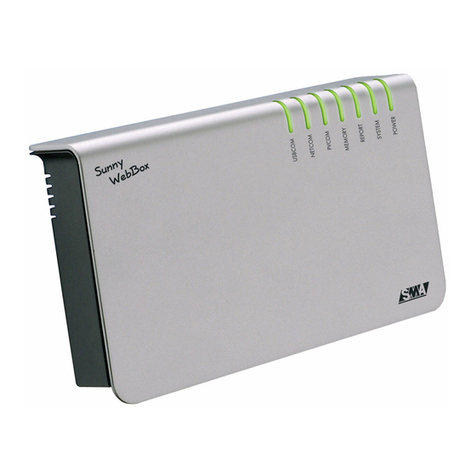
SMA
SMA SUNNY WEBBOX with Bluetooth installation guide
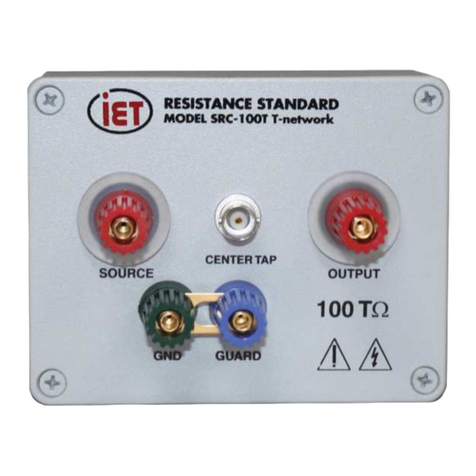
IET Labs
IET Labs SRC-10T-Tnetwork User and service manual
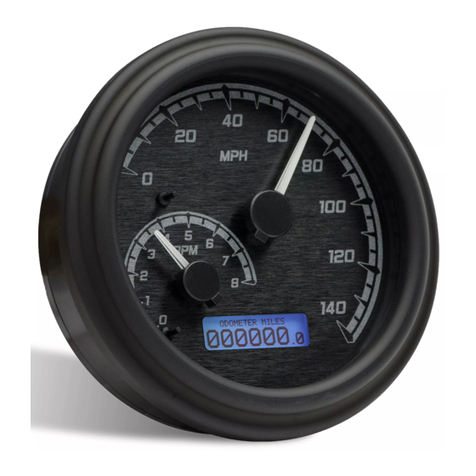
Dakota Digital
Dakota Digital MVX-2011 manual
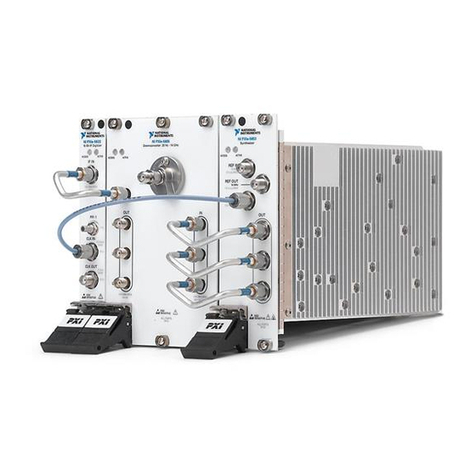
National Instruments
National Instruments PXIe-5665 Calibration manual

Martindale Electric
Martindale Electric CM100 instruction manual
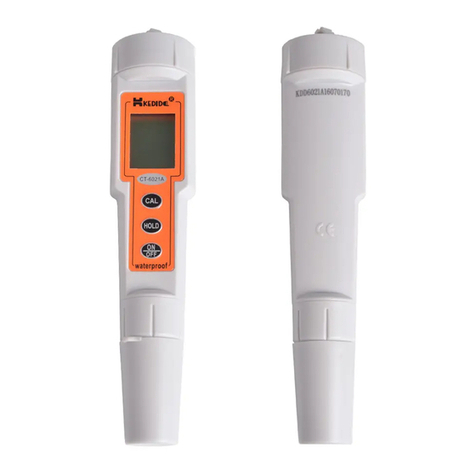
Kedida
Kedida CT-6021A instruction manual
